Defining AGI and Its Capabilities
Artificial General Intelligence (AGI) represents an advanced form of artificial intelligence that aims to replicate general human cognitive abilities. AGI designs target comprehensive, adaptable competences, allowing these systems to undertake tasks across various domains without explicit programming for each function.
In the creative spectrum, AGI introduces capabilities that could potentially revolutionize traditional art forms. AGI systems can assimilate complex, interacting elements dynamically, mirroring the depth and adaptability of human insight. This allows not merely the reproduction but the creation of artistic expressions that factor in context, subtext, and nuance—qualities previously exclusive to human artistry.
AGI has the potential to craft innovative, intricate art forms that learn and evolve. It could create:
- Sequences of music that experiment with new scales or rhythms
- Art that merges various aesthetic traditions
- Literary pieces that weave intricate narratives capable of deep philosophical queries and global perspectives
The advent of AGI could potentially herald transformative periods in art and artistic expression. As AGI develops, it may situate traditional and computational art side by side, leading to new explorations and redesigned forms.
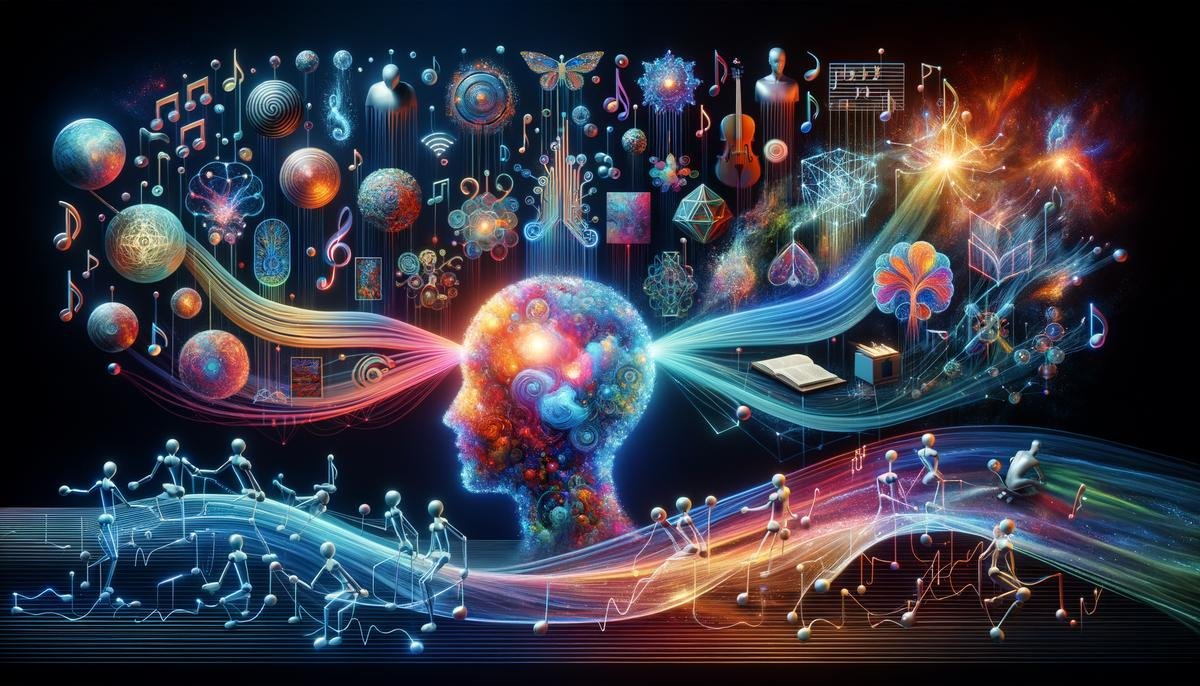
AGI in Art Creation
Utilizing AGI in art creation offers artists novel tools and methods to enhance their work. The integration of this advanced intelligence with artistic creativity is shaping new opportunities for creating and experiencing art.
Currently, various platforms use AGI to innovate within different artistic spheres. In visual arts, tools like DeepArt and Prisma employ sophisticated algorithms based on AGI principles. These platforms analyze artwork styles across historically significant artists and use this learned data to transform user-uploaded images in the style of renowned painters. This merging of AI with iconic human artistry allows users to experience traditional art through a contemporary digital lens.
In music, AGI technology like AIVA (Artificial Intelligence Virtual Artist) is revolutionizing how compositions are created. AIVA interprets the patterns of classical composers to craft intricate, novel scores that can be used in various settings, from video games to concert halls. The AGI serves as a creative agent and an expansive library of musical knowledge, capable of producing complex compositions.
Literary arts are also being influenced by AGI. Projects like Slate's Verse by Verse combine the stylistic essences of famous poets to guide users in generating poetically coherent verses. Using an arsenal of historical poetic styles and meters, AGI aids in crafting verses that align with the user's inputs while reflecting the recognized touch of literary giants.
These examples illustrate how AGI is intertwined with the art creation process, hinting at a future where these technologies could collaborate with humans as creative partners. As artists continue to explore these synergies, AGI could become a co-creator, evolving alongside artists' paradigms and jointly pushing the boundaries of what art could represent.
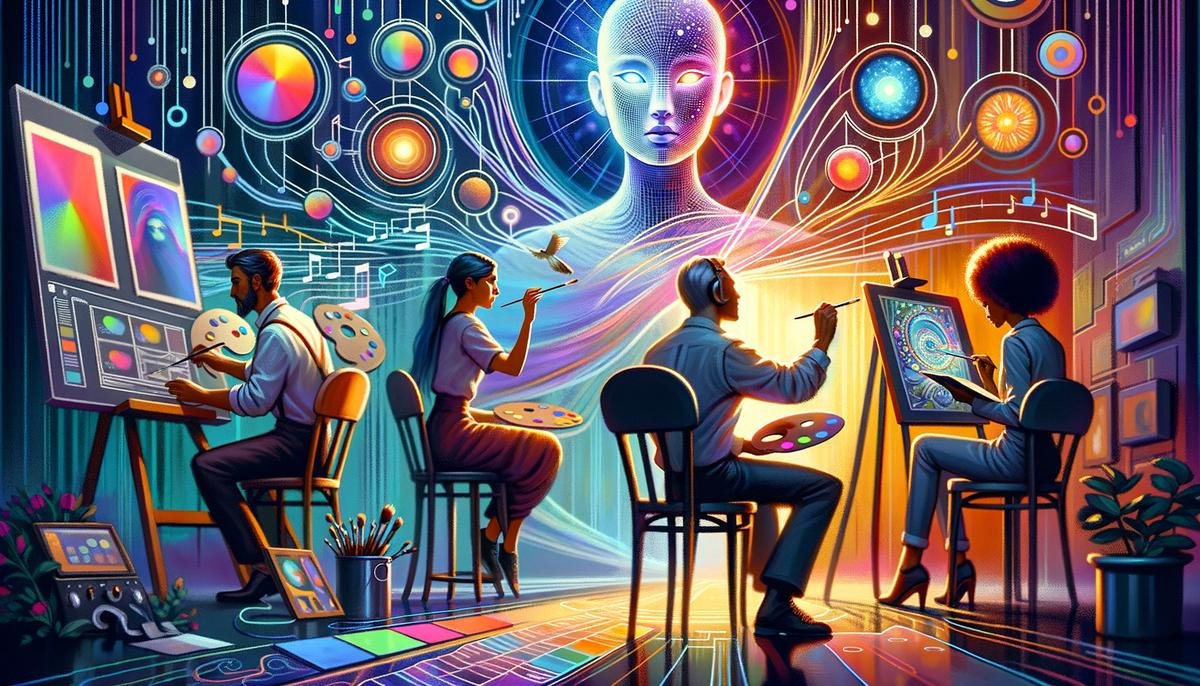
Impact on Traditional Art Forms
As AGI technology integrates into traditional art forms such as painting, sculpture, and music composition, the essence of these disciplines is evolving. The impact of AGI on these timeless forms of expression is significant, influencing methodology, stylistic innovation, and the dynamics between artists and their audiences.
In painting, AGI is transitioning from experimental participation to becoming a pivotal element of the creative process. AGI assists in refining techniques, such as mixing paints or suggesting modifications to color palettes based on historical data synthesis, the artist's past preferences, or current trends. Styles evolve as these systems enable artists to cross-reference and hybridize multiple artistic movements or predictors of future trends.
Sculpture is also incorporating AGI, weaving together craftsmanship with predictive and generative technologies. AGI aids sculptors in visualizing and testing structural integrations in virtual environments before actual creation, reducing physical costs and resource use. The fusion of digital precision and traditional tactile craftsmanship influences how sculptures are made and broadens the scope of imaginable outcomes.
Within music composition, AGI's implications are transformative. Traditional compositions are being supplemented, and sometimes initiated, by AGI systems capable of generating basic melodies that serve as the foundation for further human-artistic augmentation. These systems assist in exploring new musical scales and theories, expanding upon traditional forms. AGI can also analyze audience reactions in real-time, allowing compositions to be adaptively tuned during live performances.
As traditional art forms intermingle with AGI, the artist-audience dynamic shifts. The creation of art becomes more of an iterative dialogue, a continuous loop of creation, feedback, and reinvention between the artist, the intelligent systems, and the audience. This interactive process invites the audience closer into the creative realm, transitioning them from passive consumers to active participants.
AGI transforms how art is made and redefines its purpose and perception. It acts as a bridge, merging past artistry with futuristic visions and expanding the reach and resonance of traditional forms.
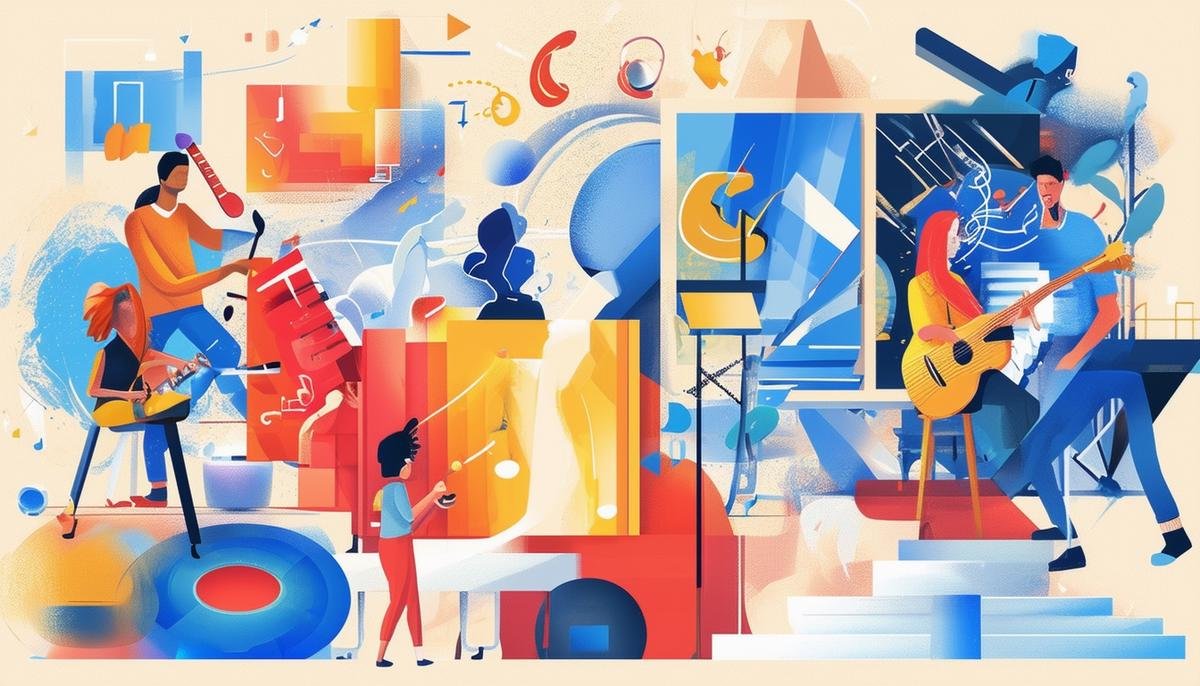
Economic Implications for Artists
The advent of Artificial General Intelligence (AGI) in the art world raises important discussions about the economic implications for artists. As AGI redefines the parameters of creativity, artists face an evolving landscape that affects their process of creation and their financial and professional stability.
One significant aspect is the potential for job displacement. The capability of AGI to simulate and enhance human creativity has led to concerns that artists might be replaced by machines. AGI systems, capable of creating high-quality artworks quickly, could potentially flood the market with inexpensive digital pieces, intensifying competition for human artists who require more time and resources.
However, while job displacement is a concern, AGI also presents new market opportunities for artisans willing to adapt and integrate these technologies into their workflow. AGI offers tools that streamline labor-intensive tasks, enabling artists to focus more on the innovative and interpretive aspects of their craft. It augments the artist's existing capabilities by providing real-time feedback, suggesting adjustments, and handling aspects of marketing and customer interaction through predictive algorithms.
AGI can help artists tackle more projects simultaneously, reduce the time taken to prepare prototypes or drafts, and expand the realm of creative possibilities. Collaboration between traditional artistic methods and AGI can lead to unique artworks that blend human intellect and technique with machine speed and intricate design theories, potentially increasing the value and originality of their offerings in a saturated market.
As AGI penetrates the art market, another dimension to consider is the change in art valuation. Art created with the assistance of AGI could be seen as less authentic by purists who value human touch above all. Conversely, AGI-created or enhanced art might fetch higher prices due to its novelty, the technology used, and intricate algorithms capable of producing distinctive art styles unachievable by human hands alone. While traditional valuation metrics may shift, new standards that appreciate and recognize the role of intelligent technologies in the creative process are likely to emerge.
The confluence of AI and art also presages the creation of new roles and professions within the art community. Artist-programmers, AI art consultants, and digital art therapists are examples of roles that marry traditional artistic skills with proficiency in digital and AI technologies. Discerning artists might leverage AGI to navigate these changes, turning economic challenges into expanded opportunities.
While AGI introduces challenges related to economic displacement within the artistic ecosystem, it simultaneously presents myriad ways for resourceful artists to adapt and monetize their capabilities anew. The key for future artisans will be to ride the wave of digital transformation, steering their venerable crafts into prosperous and novel territories.
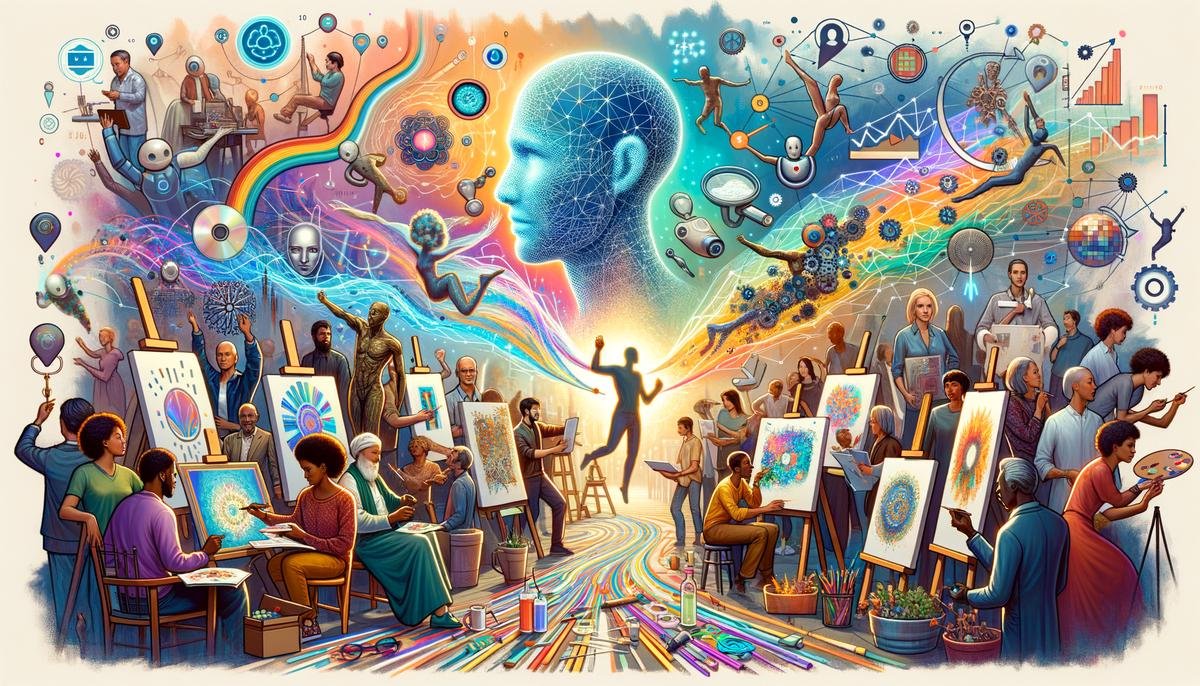
Ethical Considerations
The use of Artificial General Intelligence in the art world triggers complex ethical debates, reflecting concerns about authenticity, copyright issues, and the potential loss of the human touch in artworks. Central to these debates is whether art created or influenced by AGI can possess the soulful resonance that traditionally defines artistic experience.
Authenticity is a key issue as the art community grapples with AGI's capacity to produce works that could potentially mimic or surpass the technical skills of human artists. A significant facet of authentic art has been its originality and the personal expression of the artist, embedded with nuanced traces of the human condition. AGI's role as a co-creator or an independent artist introduces a gray area: when a machine can learn styles and techniques from existing human-created art and then produce its own versions, distinguishing a genuinely human-made creation becomes problematic. Some argue that even if aesthetically perfect, AGI-generated artworks may lack the irreplaceable emotional and experiential human imprints.
Copyright issues present another ethical challenge. As AGI learns from and reiterates patterns found in vast troves of public and copyrighted material, determining the original source becomes increasingly difficult. The fusion of influences in AGI-generated art blurs clear-cut lines of copyright ownership usually attributed to singular or collaborative human creators. Innovative output by AGI may inadvertently infringe upon the copyrights embedded in its training data, raising questions about whether such creations can and should be monetized without violating existing intellectual properties.
A poignant concern is the potential erosion of the human touch in art. Human-crafted art exposes vulnerabilities, captures spontaneous experiences, and often conveys the unintended beauty of imperfections—nuances arguably absent in machine-generated outcomes. A debate emerges about whether AI-produced artifacts can evoke or replicate the same depth of emotional response from its audiences as human artists traditionally have.
Compounded to these concerns are broader societal implications where art, as viewed through human eyes and valued through human experiences, serves as a non-replicable bridge to deeper understanding within a community or culture. Some fear that extensive AGI integration in art-making processes may ultimately standardize artistic voices, sacrificing cultural diversity.
In response, some argue that by setting robust ethical frameworks and sustained dialogue among technologists, artists, legal scholars, and ethicists, these potential pitfalls can be navigated. Carefully balanced regulations that recognize intellectual property rights, ensure transparency in AI's creative influences, and protect the sanctity of human artistry can elevate AGI from a threatening interloper to a respected collaborator in the arena of artistic creation. As we move towards increasingly digital horizons, anchoring art in human ethics might preserve its essence amidst waves of technological change.1-4
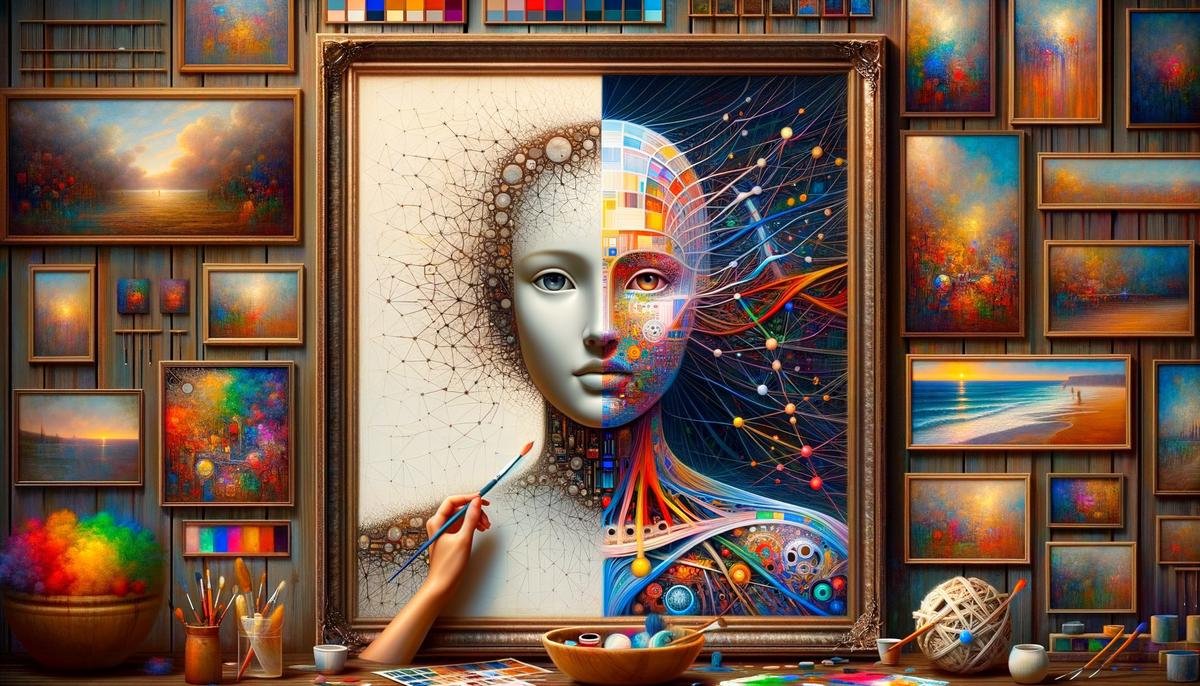
- Elgammal A, Liu B, Elhoseiny M, Mazzone M. CAN: Creative Adversarial Networks Generating "Art" by Learning About Styles and Deviating from Style Norms. 8th International Conference on Computational Creativity (ICCC); 2017.
- Epstein Z, Levine S, Rand DG, Rahwan I. Who Gets Credit for AI-Generated Art?. iScience. 2020;23(9):101515.
- Hertzmann A. Can Computers Create Art?. Arts. 2018;7(2):18.
- McCormack J, Gifford T, Hutchings P, Llano MT, Yee-King M, d'Inverno M. In a Silent Way: Communication Between AI and Improvising Musicians Beyond Sound. CHI '19: Proceedings of the 2019 CHI Conference on Human Factors in Computing Systems. 2019;1-11.



